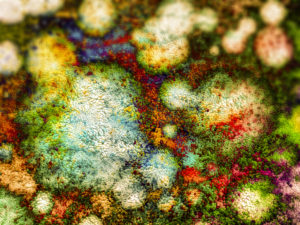A method for genetic modification of biofilms

A methodology developed by researchers at the University of Oxford to modify the DNA of microorganism’s in biofilms unlocks the potential to enhance or eradicate biofilms in a huge range of applications. The addition of DNA into established biofilms removes the need to culture these microorganisms, many of which are unculturable. Biofilms cover a multitude of surfaces and can be both advantageous, for example in bioremediation, or dangerous, for example in medical devices. The ability to modify biofilms holds a wealth of potential across many sectors.
Biofilms and microbial community – for better or worse
Biofilms are communities of microorganisms that cover a multitude of surfaces, in plant and animal tissue, underwater and above ground; wherever moisture is present, biofilms can form. From the plaque on your teeth, to breaking down contaminants, biofilms can be both very useful and harmful.
Modifying the genetic make-up of biofilms
The ability to modify the genetic make-up of biofilms directly where they are growing unlocks the potential for their enhancement or removal. Enhancing biofilm performance is particularly attractive in environmental clean-up, bioprocessing and biocatalysis where they are widely exploited. Gene modification of biofilms in situ also has potential in bio-manufacturing where introduction of new genes enabling novel properties, increasing yields and robustness is attractive. Similarly, adding DNA that would eradicate biofilm formation on implanted medical devices, such as pacemakers, or those that cause blockages in pipe-lines would improve safety and reduce energy demands. Another potential is implementing human microbiome therapies. The approach may enable problem bacteria such as Clostridium difficile to be modified, reducing pathogenicity, so reducing threat to the human microbiome.
The Oxford technology
The ability to directly modify genetic composition without compromising biofilm structure is key to their exploitation and to date approaches to achieve this have been limited. Microorganisms in biofilms are largely unculturable meaning standard methods of genetic modification are not feasible, since they require growth on laboratory media. Research in Department of Engineering Science has produced a methodology employing inertial cavitation to facilitate transformation of host cells with externally derived DNA. Employing ultrasound, the inertial cavitation enables DNA delivery into the cells through transient membrane disruption.
The DNA transformation of such organisms generates a wealth of potential across many markets including waste-water treatment, oil and gas, bio-manufacturing, human microbiome and is suitable for use with a variety of nucleic acids depending on the application. The technology can also be extended to deliver nucleic acids into mammalian cells.
Patent protection
Oxford University Innovation has filed a patent application for this technology and would like to hear from any interested parties who may wish to commercialise this technology.
about this technology

